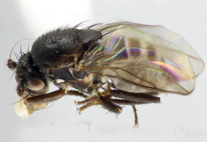Abstract
The genus Aratinga von Spix, 1824, as treated since Peters (1937), consists of 20 to 21 species (Kremer 1989, Collar 1997, Juniper & Parr 1998, Silveira et al. 2005, Dickinson 2003, Forshaw 2010) of medium-sized, pointed-tailed, mostly green parakeets that range throughout the Neotropical region. All species currently included in the genus Aratinga had already been recognized by Salvadori (1891) and placed in the genus Conurus. Ridgway (1916) placed the species in four genera: Aratinga, Eupsittula, Nandayus, and Thectocercus; Ridgway provided a rationale for his treatment using morphological and plumage characters, and he included a dichotomous key. Cory (1918) followed Ridgway’s (1916) classification. Miranda-Ribeiro (1920) placed the species in four genera: Conurus, “Nendayus” (=Nandayus), Gymnopsittacus, and “Eupsittacula” (=Eupsittula). Peters (1937) placed all members of these genera but Nandayus nenday into a single genus, Aratinga (Table 1), but provided no rationale for his classification. Nonetheless, his treatment has been followed in all subsequent classifications, including Meyer de Schauensee (1970), Sibley & Ahlquist (1990), Collar (1997), Dickinson (2003), and Forshaw (2010), although Marien & Koopman (1955) suggested retention of three subgenera.

